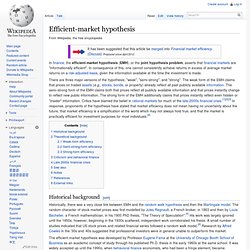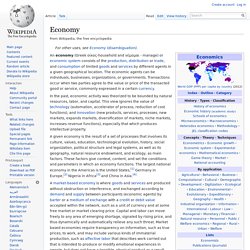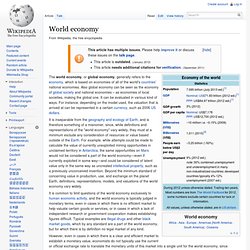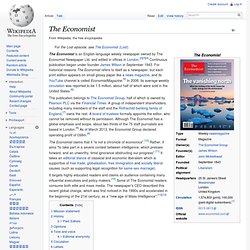

Rational expectations. This way of modeling expectations was originally proposed by John F.

Muth (1961)[2] and later became influential when it was used by Robert Lucas, Jr. and others. Modeling expectations is crucial in all models which study how a large number of individuals, firms and organizations make choices under uncertainty. For example, negotiations between workers and firms will be influenced by the expected level of inflation, and the value of a share of stock is dependent on the expected future income from that stock. Theory[edit] Rational expectations theory defines this kind of expectations as being identical to the best guess of the future (the optimal forecast) that uses all available information.
For example, suppose that P is the equilibrium price in a simple market, determined by supply and demand. Where. Efficient-market hypothesis. In finance, the efficient-market hypothesis (EMH), or the joint hypothesis problem, asserts that financial markets are "informationally efficient".

In consequence of this, one cannot consistently achieve returns in excess of average market returns on a risk-adjusted basis, given the information available at the time the investment is made. Historical background[edit] The efficient-market hypothesis was developed by Professor Eugene Fama at the University of Chicago Booth School of Business as an academic concept of study through his published Ph.D. thesis in the early 1960s at the same school. The efficient-market hypothesis emerged as a prominent theory in the mid-1960s. Paul Samuelson had begun to circulate Bachelier's work among economists. It has been argued that the stock market is “micro efficient” but not “macro efficient”. Theoretical background[edit] Weak-form efficiency[edit] In weak-form efficiency, future prices cannot be predicted by analyzing prices from the past. Cobweb model. The cobweb model or cobweb theory is an economic model that explains why prices might be subject to periodic fluctuations in certain types of markets.

It describes cyclical supply and demand in a market where the amount produced must be chosen before prices are observed. Producers' expectations about prices are assumed to be based on observations of previous prices. Nicholas Kaldor analyzed the model in 1934, coining the term 'cobweb theorem' (see Kaldor, 1938 and Pashigian, 2008), citing previous analyses in German by Henry Schultz and U. Ricci. The model[edit] The convergent case: each new outcome is successively closer to the intersection of supply and demand.
The divergent case: each new outcome is successively further from the intersection of supply and demand. The cobweb model is based on a time lag between supply and demand decisions. Economy. In the past, economic activity was theorized to be bounded by natural resources, labor, and capital.

World economy. The world economy, or global economy, generally refers to the economy, which is based on economies of all of the world's countries' national economies.

Also global economy can be seen as the economy of global society and national economies – as economies of local societies, making the global one. It can be evaluated in various kind of ways. For instance, depending on the model used, the valuation that is arrived at can be represented in a certain currency, such as 2006 US dollars. It is inseparable from the geography and ecology of Earth, and is therefore something of a misnomer, since, while definitions and representations of the "world economy" vary widely, they must at a minimum exclude any consideration of resources or value based outside of the Earth. Rather, market valuations in a local currency are typically translated to a single monetary unit using the idea of purchasing power.
Economy – overview[edit] Twenty Largest Economies in the World by GDP at Given Years[edit] The Economist. The publication belongs to The Economist Group, half of which is owned by Pearson PLC via the Financial Times.

A group of independent shareholders, including many members of the staff and the Rothschild banking family of England,[7] owns the rest. A board of trustees formally appoints the editor, who cannot be removed without its permission. Although The Economist has a global emphasis and scope, about two-thirds of the 75 staff journalists are based in London.[8] As of March 2013, the Economist Group declared operating profit of £68m.[9] The Economist claims that it "is not a chronicle of economics".[10] Rather, it aims "to take part in a severe contest between intelligence, which presses forward, and an unworthy, timid ignorance obstructing our progress".[11] It takes an editorial stance of classical and economic liberalism which is supportive of free trade, globalisation, free immigration and socially liberal causes (such as supporting legal recognition for same-sex marriage).